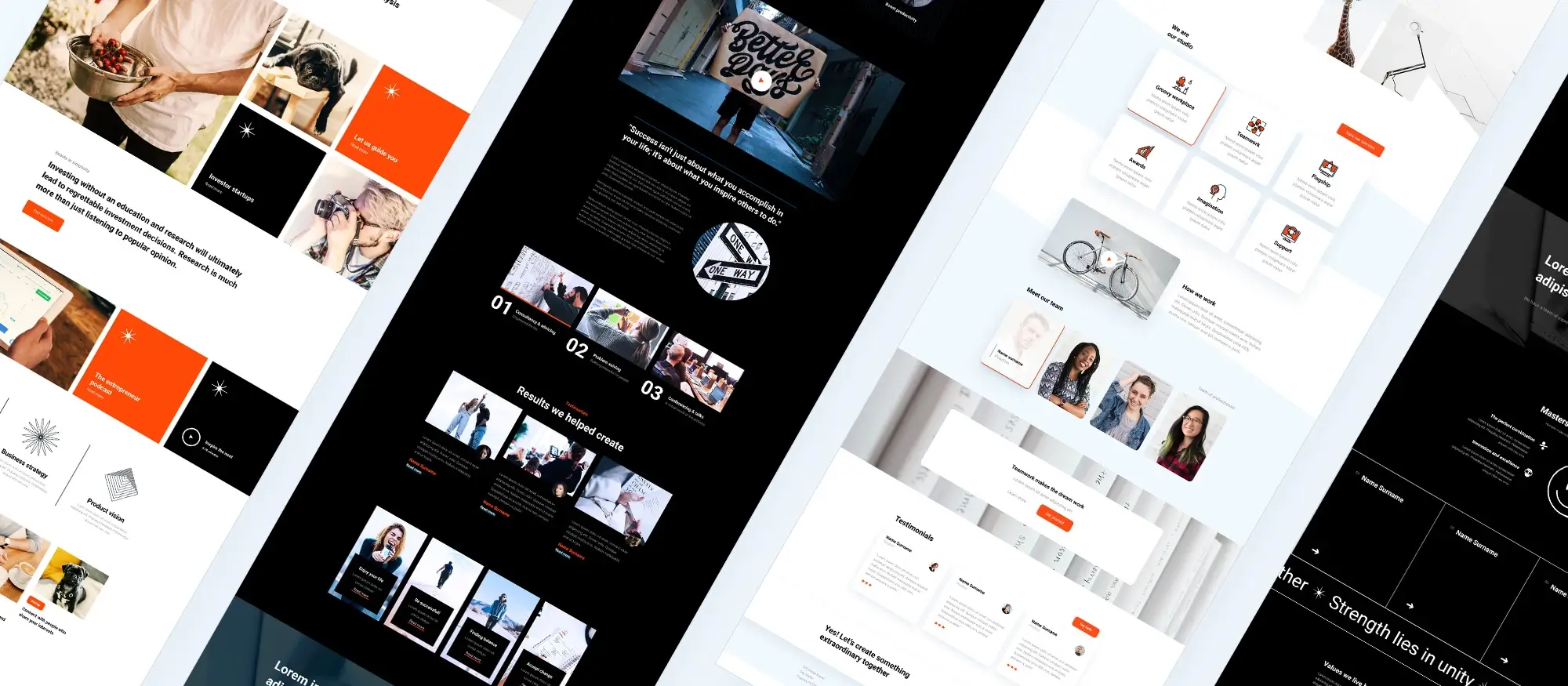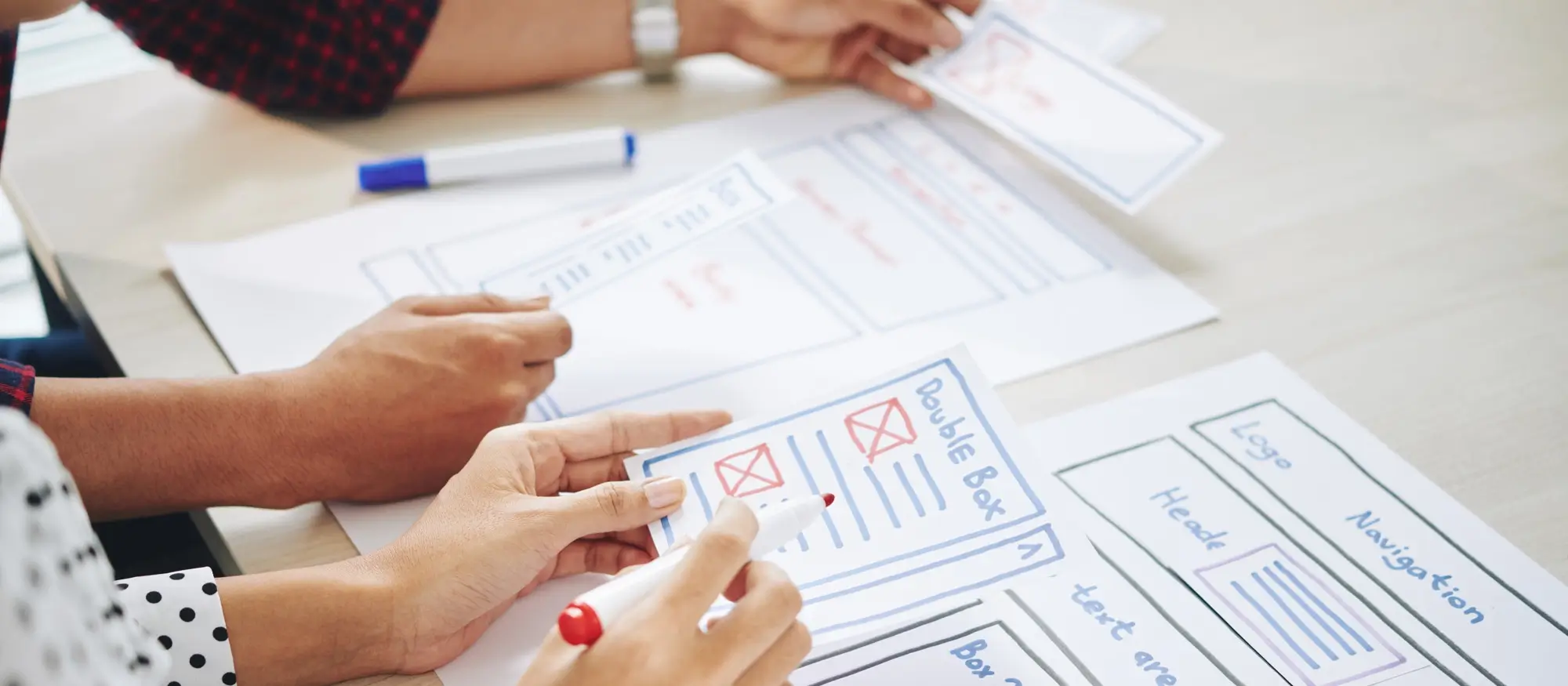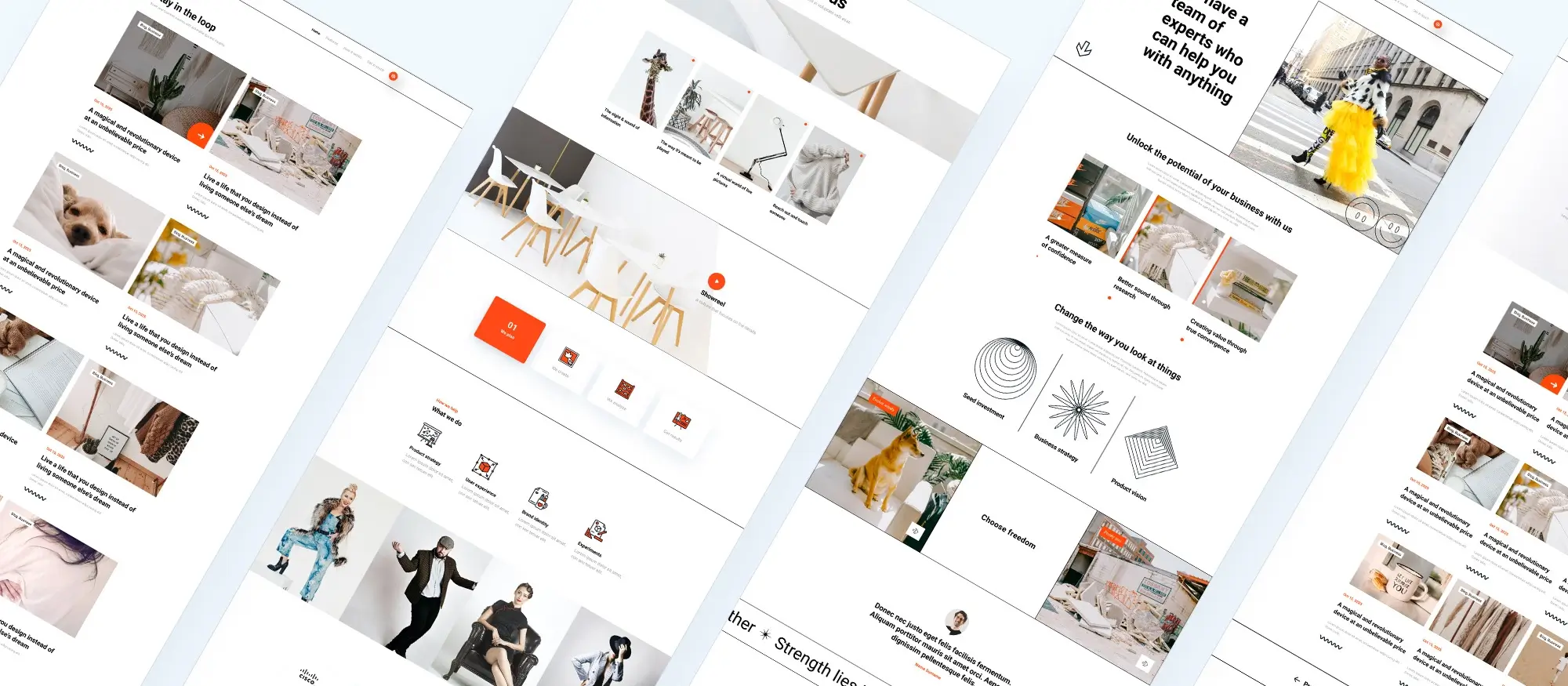What are the 10 best practices of top WordPress designers
Try MaxiBlocks for free with 500+ library assets including basic templates. No account required. Free WordPress page builder, theme and updates included.

Updated 15th May 2025
Best practices for WordPress website design
WordPress has become one of the most popular platforms for building websites, thanks to its flexibility and user-friendly nature. Good design plays a significant role in making a website attractive and functional, keeping visitors engaged and encouraging them to return. In this post, we explore some of the best practices used by top WordPress designers to create outstanding websites. If you are just starting, you might find our beginner’s guide to getting started with WordPress development a helpful place to begin.
Prioritising mobile responsiveness
Designing websites that work well on mobile devices is no longer an optional extra. A mobile-first design approach ensures that a website looks good and functions properly on smartphones and tablets. With more people accessing the internet on their phones than ever before, it is vital to make sure your website is mobile-friendly. Using responsive themes and applying media queries can help achieve a consistent experience across all devices. You can read more about this in our article on responsive design with WordPress.
Keeping design simple and clean
A simple, clean design often works better than a cluttered or overly complicated one. Focusing on simplicity makes websites easier to navigate and more visually appealing. By stripping back unnecessary elements and concentrating on the essentials, you can create a professional, polished look. This approach not only improves functionality but also enhances the overall aesthetic of the site. Good examples of effective simple designs usually include the clever use of white space, clear typography, and an emphasis on important content. Our discussion on modern web design explores this idea further.
Focusing on typography
Typography has a big impact on how a website feels and how easily users can read and enjoy the content. Choosing appropriate fonts, sizes, and spacing can greatly improve the reading experience and keep visitors engaged. Good typography not only makes text easier to digest but also adds to the overall personality of the site. Resources like Google Fonts and Typekit offer a wide selection of typefaces to suit various styles and purposes. If you would like to dive deeper into this topic, have a look at our article on typography in web design.

Best practices for WordPress website design
Using high-quality images and media
High-quality images and media are essential for creating a visually appealing and engaging website. They help communicate your message more effectively and can capture the attention of visitors straight away. It is important to choose images that are clear, professional, and relevant to your content. Optimising images for the web is equally important, as it ensures they load quickly and look good across all devices without slowing down your site. Videos, graphics, and other media formats can also add depth and interest to your pages when used carefully. However, it is best to use them thoughtfully so that they enhance the user experience rather than distract or cause slow loading times.
Implementing consistent branding
Keeping branding consistent throughout a website plays a big part in building trust and creating a memorable experience for visitors. This means using the same colours, fonts, logos, and messaging across every page. Consistent branding helps create a cohesive look and makes the website feel more professional and trustworthy. It also strengthens brand recognition, helping visitors quickly associate the design with your business or project. Some of the best examples of strong branding feature a clear colour scheme, carefully chosen typography, and a consistent tone of voice that reflects the brand’s character. If you would like to explore this in more detail, take a look at our guide on professional WordPress design.
Subscribe to our newsletter
WordPress website design tips you should know
Ensuring fast load times
Fast load times are important for keeping visitors on your site and making a good first impression. If a website takes too long to load, people are likely to leave before they even see what you have to offer. Improving your website’s speed can also help boost your search engine rankings, making it easier for more people to find you. You can make your site faster by compressing images, using caching plugins, and reducing the number of heavy scripts that need to load. Tools like Google PageSpeed Insights can point out areas where you can make improvements. A quick, smooth-loading website not only gives visitors a better experience but also encourages them to stay longer and explore more pages.
Creating easy navigation
Easy and intuitive navigation is key to making sure visitors can find what they need without any fuss. A clear menu, logical page structure, and helpful features like breadcrumbs can guide people through your site in a straightforward way. Good navigation means visitors do not have to think too much about where to click next, making them more likely to stay and interact with your content. The best websites often have simple, well-organised menus with clear categories that make it easy to move around the site. When visitors can find what they are looking for quickly, they are far more likely to have a positive experience and return in the future.

Best practices for modern WordPress website design
Using custom themes and plugins
Custom themes and plugins can make a big difference to how your WordPress site looks and works. They give you the flexibility to build a unique site that properly reflects your brand and meets your visitors’ needs. When picking a theme or plugin, it is important to think about what your site needs to achieve and what your audience expects. Good custom themes and plugins should offer plenty of options for customisation and be regularly updated so they stay compatible with the latest version of WordPress. Choosing the right ones can save you time and effort in the long run and help you build a site that not only looks professional but also runs smoothly. You can find more on this topic in our guide to custom WordPress design and top must-have plugins for WordPress developers.
Incorporating user feedback and testing
Listening to your users is one of the best ways to improve your website. Feedback from visitors can show you what is working well and what might need fixing. There are lots of ways to gather feedback, such as surveys, usability testing, and tracking how people move through your site with analytics tools. Analysing this information gives you a clear idea of where changes are needed. It is also a good idea to run tests, like A/B testing, to compare different versions of your pages or design elements. This helps you make decisions based on real data rather than guesswork, making your site better for everyone who uses it.
Build like a pro
Current best practices in WordPress web design
Staying updated with design trends and best practices
If you’re building or managing a site, learning how to handle issues like debugging WordPress is essential for keeping everything running smoothly. A custom WordPress website offers more flexibility than templates, and you can find support from top WordPress designers or even a skilled freelance WordPress web designer depending on your needs. To enhance your site’s functionality, it’s worth exploring essential WordPress plugins or diving into this broader list of must-have plugins. If you’re just getting started with SEO, check out this beginner’s guide to keyword research to help plan your content. Reliable performance also depends on the right setup, and WordPress hosting, WordPress website hosting and WordPress hosting options are all key considerations. For layout control, understanding Flexbox and applying expert Flexbox direction tips can help refine your design. Lastly, to add clean, scalable icons to your site, follow this step-by-step Font Awesome guide for easy implementation.

Final thoughts on top WordPress designers
When you look at the work of top WordPress designers, a few things quickly stand out. They know how to create websites that not only look good but also work beautifully for visitors. Great designers understand that a website has to do more than just impress. It needs to load quickly, be easy to use on all devices and help visitors find what they are looking for without confusion.
The very best WordPress designers combine creativity with technical knowledge. They know how to balance strong visual style with performance. They do not overload a page with unnecessary effects or heavy plugins. Instead, they choose clean design, smart layouts and fast, reliable tools. A good example is when a designer picks a lightweight theme and builds with care, thinking about both the people visiting the site and the site owners who will manage it afterwards.
The tools that make a difference
Today, even the best designers are turning to smarter, faster tools to help them work better. MaxiBlocks is one of those tools. It is designed to give both designers and website owners a better way to build beautiful, modern websites without slowing things down. It works hand-in-hand with WordPress’s Gutenberg editor, meaning there is no need for extra weight that can make sites sluggish.
Using MaxiBlocks, you have access to thousands of ready-made block designs and templates. You also get powerful design options like style cards that make it easy to keep a consistent look across your whole site. Designers appreciate that they can build quickly and still have full control over how every part of the page looks and behaves. If you want to get the most out of it, you might also want to check out the MaxiBlocks Go theme, which is made to work perfectly with the plugin.
Why the right approach matters
Top designers know that a website is often the first thing people see about a business. It has to make the right impression straight away. That is why they take time to choose the right tools, follow best practices and design for real people. They create websites that are fast, easy to use and built to last. They are not chasing trends for the sake of it. They focus on building a site that will still feel fresh and work properly months or even years later.
If you are planning a new website or thinking about a redesign, it is worth taking a close look at how top WordPress designers work. And if you want a tool that helps you create modern, professional websites without getting bogged down in complicated setups, MaxiBlocks is well worth trying. It is a smarter, faster way to build with WordPress and a great choice whether you are designing your first site or your hundredth.
Smart solutions for modern WordPress web designers
Design better sites with smart solutions built for WordPress web designers and creative teams.
FAQs – Top WordPress designers
Who are top WordPress designers?
Top WordPress designers are professionals or agencies known for creating visually stunning, highly functional WordPress websites. They combine creative design with technical expertise to deliver custom websites that are user-friendly, mobile responsive and aligned with brand goals.
What makes a WordPress designer stand out?
A standout WordPress designer has a strong portfolio, creative design skills, a deep understanding of WordPress functionality and the ability to create user-centred designs. They also stay updated with the latest design trends and WordPress developments.
How do I find top WordPress designers?
You can find top WordPress designers by browsing freelance platforms, WordPress-specific job boards, design agency websites or by looking at websites you admire and checking who designed them. Reviews, case studies and portfolios are good indicators of quality.
What should I look for in a top WordPress designer?
Look for a designer with proven experience, excellent design sense, knowledge of mobile-first design, SEO best practices, and the ability to understand and translate your brand vision into a digital experience.
Are there WordPress agencies that employ top designers?
Yes, many agencies specialise in WordPress design and development, employing top designers. Agencies like 10up, WebDevStudios, Human Made and WP Buffs are known for their expert teams and high-quality WordPress work.
Do top WordPress designers also handle development?
Some WordPress designers are skilled in both design and development, while others focus only on design and work alongside developers. For complex projects, collaboration between designer and developer often produces the best results.
How much do top WordPress designers charge?
Costs vary based on experience, project complexity and region. Top designers might charge from a few thousand pounds for basic sites to tens of thousands for bespoke designs, e-commerce stores or large-scale business platforms.
Can I hire a top WordPress designer for small projects?
Many top designers take on small projects, especially if they are interesting or creatively challenging. However, for very small budgets, you may need to find designers who are early in their careers but still highly talented.
How do I evaluate a WordPress designer’s portfolio?
Look for diversity in design style, evidence of mobile responsiveness, good user experience, clean layouts, fast loading times and consistent branding. Also check whether their designs have helped achieve the client’s business goals.
Should I work with a freelance designer or an agency?
Freelancers often offer a more personal, flexible service and may be more affordable. Agencies provide a full team of experts including designers, developers and SEO specialists, making them ideal for larger or more complex projects.
WordPress itself
Official Website
wordpress.org – This is the official website for WordPress, where you can download the software, find documentation, and learn more about using it.
WordPress Codex
codex.wordpress.org/Main_Page – This is a comprehensive documentation resource for WordPress, covering everything from installation and configuration to specific functionality and troubleshooting.
WordPress Theme Directory
wordpress.org/themes – The official WordPress theme directory is a great place to find free and premium WordPress themes. You can browse themes by category, feature, and popularity.
maxiblocks.com/go/help-desk
maxiblocks.com/pro-library
www.youtube.com/@maxiblocks
twitter.com/maxiblocks
linkedin.com/company/maxi-blocks
github.com/orgs/maxi-blocks
wordpress.org/plugins/maxi-blocks

Kyra Pieterse
Author
Kyra is the co-founder and creative lead of MaxiBlocks, an open-source page builder for WordPress Gutenberg.
You may also like

